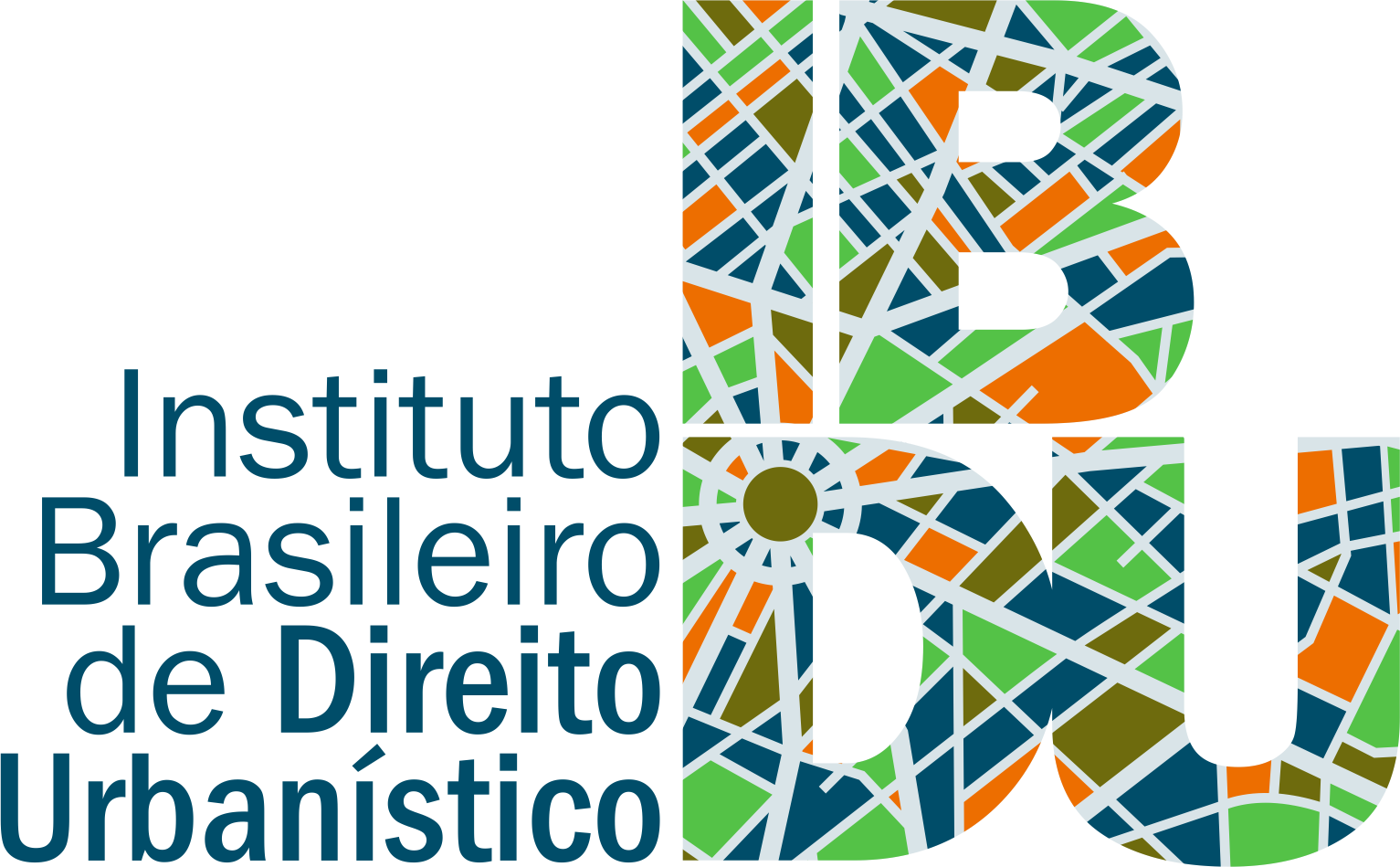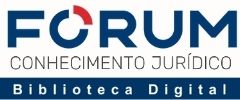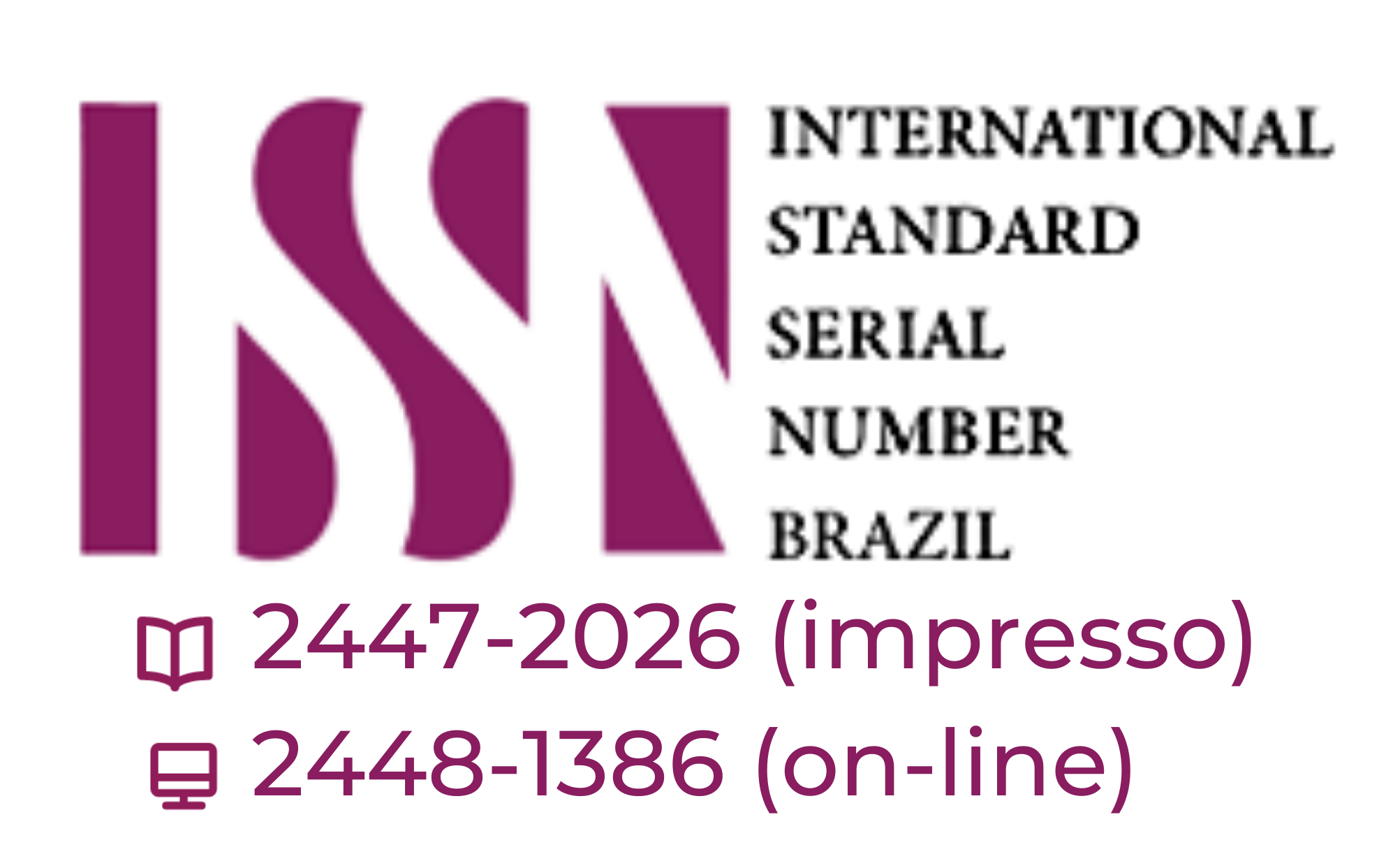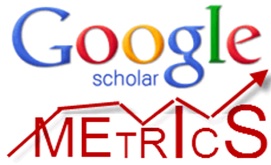|
|
|
|
e-ISSN 2448-1386 Eletrônico I-ISSN 2447-2026 Impresso |
|
|
|
|
|
|
|
|
|
|
|
|
|
Submissions
Submission Preparation Checklist
As part of the submission process, authors are required to check off their submission's compliance with all of the following items, and submissions may be returned to authors that do not adhere to these guidelines.Author Guidelines
1. Article Submission
Article propositions for publishing on the RBDU must be sent through the electronic submission system (free of cost) and access through login and password. Propositions sent by e-mail will not be accepted. The Journal has the right to accept or reject any originals received, according to its Editorial Board’s recommendations, including the inadequacy of the article's theme to the journal's editorial profile, as well as the right to propose modifications.
2. Author Qualification
At least one of the authors must own either a PhD degree or a Doctor of Juridical Science (J.S.D. or S.J.D), Doctor juris (Dr. iur. or Dr. jur.), Doctor of Philosophy (Ph.D.) ou Legum Doctor (LL.D.) degree. This requirement can be relativized, never exceeding 30% of the articles per edition, in exceptional cases of: (i) authors affiliated to foreign institutions; (ii) articles written in English.
3. Originality and exclusivity
Articles for publication in the RBDU must be original and exclusive, except in case of articles written in a foreign language and published outside Brazil. After the publication of the article in this journal, it can also be published in books and compilations, as long as the original publication is mentioned. We ask the authors to commit to not publish the article in other journals or reviews, as well as not to submit it to other journals at the same time.
4. Languages
Articles can be submitted in English, Portuguese, and Spanish.
5. Registration of the metadata in the electronic submission system
5.1. At the time of submission of the article to the electronic system, the metadata fields must be filled in according to these guidelines, under penalty of preliminary rejection of the submission.
5.2. Authors
5.2.1. First name/Middle name/Last name: indication of the full name of the author(s) with only the initials of each name in capital letter. In case of articles in co-authorship, the names of all coauthors must be inserted in the system in the order that should appear at the time of publication.
5.2.2. E-mail: indication of the e-mail address of the author(s) for contact, which will mandatorily appear in the published version of the article.
5.2.3. ORCID iD: indication of the number of the author’s ORCID identifier (for further information click here). The ORCID identifier can be obtained in ORCID register. Authors must have to accept the patterns for presentation of ORCID iD and include the full URL (e.g.: https://orcid.org/0000-0003-1781-1726).
5.2.4. URL: link to the author's full curriculum. In the case of Brazilian authors, the link to the Lattes Curriculum should be indicated.
5.2.5. Affiliation: indication of the author’s main institutional affiliation (or two main affiliations if both of the links with them have the same importance). The main institution is where the author is professor or student, or, in case of not being professor or student anymore, the institution where the authors obtained their major academic title (PhD, J.S.D., LL.M, B.A., etc.). The institution’s name must be written in full (not abbreviated) and in the original language of the institution (or in English for non-Latin languages), followed by an indication of the country of origin of the institution between parentheses. If the author is a professor and also a PhD, J.S.D or LL.M candidate in another institution, the main affiliation will be the institution where the author is candidate.
5.2.6. Country: indication of the country of the author's main institutional affiliation.
5.2.7. Bio Statement: indication of the author’s abbreviated CV, with the information organized in the following sequence: first, the indication of the institution to which the author is affiliated as a professor; second, between parentheses, the city, state/province (if applicable) and country of the institution; third, indication of academic titles (starting with the highest); fourth, other bonds with scientific associations; fifth, profession; etc.
5.3. Title and Abstract:
5.3.1. Title: title in the language of the article, with only the first letter of the sentence in capital letter.
5.3.2. Abstract: abstract in the language of the article, without paragraph or citations and references, with up to 200 words.
5.4. Indexing:
5.4.1. Keywords: indication of 5 keywords in the language of the article (in lower case and separated by semicolons).
5.4.2. Language: indicate the acronym corresponding to the language of the article (Português=pt; English=en; Español=es).
5.5. Supporting Agencies: articles resulting from funded research projects should indicate in this field the source of funding.
5.6. References: insert the complete list of references cited in the article, with a space of one line between them.
6. Text Presentation and pre-textual elements
6.1. The article must have between 15 and 30 pages (size A4 - 21 cm × 29,7 cm), including introduction, development and conclusion (not necessarily with these titles) and a bibliographic reference list. The maximum number of pages can be relativized in exceptional cases, decided by the Editorial team.
6.2. Edges (margins) must be: top and left with 3 cm, bottom and right with 2 cm.
6.3. The text must use Font Times New Roman, size 12, line spacing 1.5, and spacing 0 pt before and after paragraphs.
6.4. References must use Font Times New Roman, size 10, simple space between lines.
6.5. In the development of the text, the paragraphs must contain decrease of 1.5 cm from the left margin. Titles and subtitles must be aligned with the left margin without decrease.
6.6. The structure should observe the following order:
6.6.1. Title in the article’s language, in bold, centralized, with the first letter of the sentence in capital letter.
6.6.2. In case of indicating information related to the article (financing from sponsoring agencies, acknowledgments, translators, etc.), it is necessary to insert a footnote with an asterisk (not number) on the right side of the title in the article’s language.
6.6.3. Title in English, with only the first letter in capital letter, in bold and in italic, centralized. In the case of articles written in English, this element must be substituted by the title in Portuguese.
6.6.4. The article must not include the names of the author(s). The information for publication purposes will be taken from the metadata entered by the author(s) in the journal’s electronic system at the time of submission.
6.6.5. Abstract in the article’s language (font Times New Roman, 12, simples lines, without paragraph or quotations and references, until 200 words), preceded by the word “Abstract” written in the article’s language.
6.6.6. Indication of five keywords in the article’s language (in lower case and separated by semicolon), preceded by the expression “Keywords” written in the article’s language.
6.6.7. Abstract in English (font Times New Roman, 12, simples lines, without paragraph or quotations and references, up to 200 words), preceded by the word “Abstract”. In case of articles written in English, this element must be replaced by the abstract (“resumo”) in Portuguese.
6.6.8. Indication of five keywords in English (in lower case and separated by semicolon), preceded by the expression “Keywords”. In case of articles written in English, this element must be replaced by keywords (“palavras-chave”) in Portuguese.
6.6.9. Table of contents, indicating the titles of the sections and subsections, with progressive numbering in Arabic numbers.
6.6.10. Development of the scientific article: progressive numbering, in Arabic numbers, must be used to make clear the content’s systematization.
6.6.11. Bibliographic references list must bring only sources that were really used, located in the end of the article, separated by a simple space, lined to the left margin (no indent).
6.6.12. For other aspects, apply Brazilian technical norms (ABNT NBR 10520:2002 e 14724:2011).
6.6.13. In the case of articles with 4 or more authors, it is necessary to include a footnote indicating the contribution of each one to the article.
6.7. Highlights must be made only in italics, meaning that bold, underlined or caps lock, cannot be used to highlight.
6.8. Images and boards must be inserted in the text, not in the end in form of attachments.
7. Scientific Methodology
7.1. The references of books, chapters in collective books, articles, theses, dissertations/essays, monographs of quoted authors used as base to write the text must be mentioned as a reference on the footnotes, with all the information about the text, according to the Brazilian technical norms (ABNT NBR 6023:2018 – summarized in the item 7.1.3 below), and especially, indicating the page of which the information written on the text was taken, right after the reference.
7.1.1. Book’s title (or journal’s title) must be highlighted in italics (bold shall not be used for that purpose).
7.1.2. Articles written in the format AUTHOR-YEAR will not be accepted for publishing.
7.1.3. References shall appear as follows:
7.1.3.1. Books: LAST NAME, Name Middle Name. Title of the book in italics: subtitle not in italics. Number of the edition. City: Publisher, Year.
Example:
KEEN, Andrew. Vertigem digital: por que as redes sociais estão nos dividindo, diminuindo e desorientando. Trad. Alexandre Martins, Rio de Janeiro: Zahar, 2012. 254p.
7.1.3.2. Chapter in a collective book:
LAST NAME, Name Middle Name. Title of the Chapter not in bold. In: ORGANIZER’S LAST NAME, Name Middle Name; 2ND ORGANIZER’S LAST NAME, Name Middle Name, and so on, separated by semicolon (Org. or Coord.). Title of the book in italics: subtitle not in Italics. Number of the edition. City: Publisher, Year. first page-last page [preceded by “p.”].
Example:
DOTTA, Alexandre Godoy. Derechos de la Población LGBT+ en Brasil: Vulnerabilidad Social entre Avances y Retrocesos. In: BRAVO, Álvaro Sánches; CASIMIRO, Ligia Melo de; GABARDO, Emerson. (Orgs.). Estado Social Y Derechos Fundamentales en Tiempos de Retroceso. Sevilha: PontoRojo, 2019. p. 203-228.
7.1.3.3. Articles in journals:
LAST NAME, Name Middle Name. Title of the article not in bold. Title of the journal in italics, city, volume, number, first page-last page [preceded by “p.”], months of publishing [abbreviated with the first three letters of the month followed by dot and separated by a slash]. Year.
Example:
GABARDO, Emerson; SAIKALI, Lucas Bossoni. A prescritibilidade da ação de ressarcimento ao erário em razão de atos de improbidade administrativa. Revista Jurídica - Unicuritiba, Curitiba, v. 1, p. 514-543, 2018.
7.1.3.4. Theses of Full Professor contests, Doctoral theses, Master’s dissertations/essays, Undergraduate and Graduate courses monographs:
LAST NAME, Name Middle Name. Title in italics: subtitle. City, year. number of pages followed by “f”. Kind of the work (Degree obtained with the defense) – Department or Sector, Name of the institution.
Example:
SANTOS, Fábio de Sousa. Análise Comparada da Competição na Contratação Pública Brasileira e Estadunidense. Curitiba, 2018. 134f. Dissertação (Mestrado em Mestrado em Direito) – Pontifícia Universidade Católica do Paraná. Curitiba: 2018.
7.1.3.5 DOI - Digital object identifier: If the document consulted in the research has the DOI number, it is recommended to include, in a complementary way, the number after the end of each reference. Example:
DOTTA, Alexandre Godoy. Public policies for the assessment of quality of the Brazilian higher education system. Revista de Investigações Constitucionais, Curitiba, v. 3, p. 53-69, 2016. DOI. 10.5380/rinc.v3i3.49033.
7.1.3.6. Documents in electronic media: Documents extracted from electronic media must present after the end of each reference the location of the network where it was found and presented as follows. Example:
RBDU. Revista Brasileira de Direito Urbanístic. Regras para a submissão de artigos. Disponível em: https://journal.nuped.com.br/index.php/direitourbanistico/about/submissions Acesso em: 12 fev. 2020.
7.1.4. The elements of references must observe the following model:
7.1.4.1. Author: LAST NAME in capital letters, comma, Name with the initials in capital letters, Middle Name with the initials in capital letters, followed by a dot.
7.1.4.2. Edition: the information must only be included after the second edition of the book, without ordinal, followed by a dot and “ed.”. Example: 2. ed.
7.1.4.3. Year: it must be written with Arabic numerals, without dot in thousand, preceded by comma, and followed by a dot. Example: 1997.
7.1.5. In case of being impossible to find one of those elements, the absence must be resolved in the following manner:
7.1.5.1. Absence of city: replace for [S.l.].
7.1.5.2. Absence of publisher: replace for [s.n.].
7.1.5.3. Absence of year: the approximated year must be indicated between brackets, followed by a question mark. Example: [1998?].
7.2. The quotations (words, expressions, sentences) must be carefully reviewed by the authors and/or translators.
7.2.1. The direct quotations must follow this pattern: transcription until four lines should fit in the text body, with normal letter, normal spacing and quotation marks.
7.2.2. It is strongly recommended that long textual quotations (more than four lines) are not used. However, if indispensable, they shall constitute an independent paragraph, with 1,5 cm of decrease related to the left margin (justified alignment), with simple lines and font 10. In that situation, quotation marks must not be used.
7.2.3. It is forbidden the use of “op. cit.", "loc. cit.", "ibidem" and "idem" in the footnotes. The references in footnote must be complete and written out.
7.2.4. For the mention of authors in the text body, it is forbidden the use of capital letters (e.g. for Name LAST NAME…). In this case all mentions shall be written only with the first letter in capital letter (ex.: for Name Last Name...).
8. Composition
8.1. Apart from having an adequate scientific language for an editorial publication, the text must be reviewed.
8.2. In the case of articles written in Portuguese, the writing must obey the new orthographic rules in force since the promulgation of the Portuguese Language Orthographic Agreement, from January 1st, 2009.
8.3. Citations of texts that precede the Agreement must respect the original spelling.
9. Articles resulted from funded researches
Articles resulted from funded research projects shall indicate in a footnote, located at the end of the article title in the original language, the information related to the research financing.
10. Copyright statement
Authors who publish in this Journal have to agree to the following terms:
10.1. No copyright or any other remuneration for the publication of papers will be due.
10.2. Authors retain copyright and grant the RBDU the right of first publication with the article simultaneously licensed under the Creative Commons Attribution License, which allows sharing the work with recognition of its initial publication in this Journal. Moreover, because of their appearance in this open access Journal, articles are free to use, with proper attribution, in educational and non-commercial applications.
10.3. Authors are allowed and encouraged to post their work online (e.g. in institutional repositories or on their personal webpage) at any point before or during the submission process, as it can lead to productive exchanges, as well as increase the impact and citation of published work (see The Effect of Open Access).
11. Authors responsibilities
11.1. Authors are responsible for the published content, committing therefore to participate actively in the discussion of the results of their scientific research, as well as the review process and approval of the final version of the work.
11.2. Authors are responsible for the conducting all the scientific research, as well as its results and validity.
11.3. Authors should report the Journal about any conflict of interest.
11.4. Authors are fully and exclusively responsible for the opinions expressed in their articles.
11.5. When submitting the articles, authors recognize that all statements contained in the manuscript are true or based on research with reasonable accuracy.
12. Conflict of interest
The public confidence in the double blind peer review process and the credibility of published articles depend in part on how conflicts of interest are managed during manuscript writing, peer review and decision making by the editors.
12.1. It is mandatory that the author of the manuscript declares the existence or not of conflicts of interest. Even thinking that there are no conflicts of interest, the author must declare this information in the article submission act, marking that field.
12.2. Conflicts of interest may appear when authors, reviewers or editors have interests that, apparently or not, may influence the development or evaluation of manuscripts.
12.3. When authors submit a manuscript, they are responsible for recognizing and revealing financial or other nature conflicts that may have influenced their work.
12.4. Authors must recognize all the financial support for the work and other financial or personal connections related to the research. The contributions of people who are mentioned in the acknowledgments for their assistance in the research must be described, and its consent to publication should be documented.
12.5. Manuscripts will not be simply dismissed because of a conflict of interest. A statement that there is or not a conflict of interest must be made.
12.6. The ad hoc reviewers must also reveal to editors any conflicts of interest that could influence their opinions about the manuscript and must declare themselves unqualified to review specific documents if they believe that this procedure is appropriate. In the case of the authors, if there is silence from the peer reviewers about potential conflicts, it will mean that conflicts do not exist.
12.7. If a conflict of interest on the part of the peer reviewers is identified, the Editorial Board will send the manuscript to another ad hoc reviewer.
12.8. If the authors are not sure about what might constitute a potential conflict of interest, they should contact the Journal’s Editor-in-Chief.
12.9. In cases in which members of the Editorial Team or some other member publish frequently in the Journal, it will not be given any special or different treatment. All submitted papers will be evaluated by double blind peer review procedure.
13. Other information
13.1. The articles will be selected by the Editor-in-Chief and the Editorial Board of the Journal, which will contact the respective authors to confirm the text reception, and then forward them to the two ad hoc reviewers’ analysis.
13.2. The received and not published originals will not be given back.
13.3. Authors have the right to appeal of the editorial decisions.
13.3.1. They will be granted five (5) days from the date of the final decision of the Editorial Board to appeal.
13.3.2. The written appeal must be sent to the e-mail: <contato@ibdu.org.br>.
13.3.3. The appeal will be examined by the Editorial Board within thirty (30) days.
Editorial/Apresentação/Presentation/Presentació
Documents/Documentos
Decisão, Recomendações, Notas Técnicas
Privacy Statement
The names and email addresses entered in this journal site will be used exclusively for the stated purposes of this journal and will not be made available for any other purpose or to any other party.













